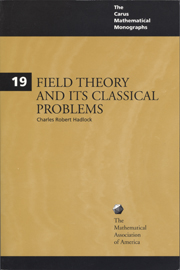INTRODUCTION
Summary
Mathematical knowledge has undergone explosive growth in the past few hundred years. No doubt, a significant portion of this growth is due to the usefulness of mathematics as a tool in many fields. However, probably the greatest single stimulus to the development of this subject is its natural intellectual appeal—the challenge of a hard problem and the satisfaction of resolving it. For centuries these factors have motivated the efforts of mathematicians.
Problems which are simple to state and understand are quite reasonably often the most attractive. It is not uncommon for such problems to stimulate extensive research by many mathematicians, and through their solution to lead to results and insights far beyond their original bounds. The solution of one problem inevitably leads to the posing of others, and thus the subject of mathematics continues to grow.
The theories emerging from the solution of fundamental problems continue to be refined and generalized, for part of the work of the mathematician is to abstract from one situation its fundamental features and to apply these to other situations that are similar. A mature theory may bear scant resemblance to the solution of the original problems upon which it is founded. And the abstract exposition of such a theory may not stimulate in those who would study it the intellectual excitement and curiosity which led to its development.
- Type
- Chapter
- Information
- Field Theory and its Classical Problems , pp. 1 - 8Publisher: Mathematical Association of AmericaPrint publication year: 1975

